Survey finds patients are returning to preventive visits and seeking emergency care.
Americans have pressed pause on preventive care amid the pandemic. That’s cause for concern for both patients and their providers – but a new survey from LocumTenens.com suggests many patients are ready to return to their doctors’ offices. The survey explores how patients have shifted their views and comfort level from pre-pandemic to the peak of the coronavirus in their region to now. The survey also covers the increase in telehealth across demographics, as well as the new, growing crisis of Americans needing healthcare but losing healthcare insurance due to the pandemic.
Explore the report findings in depth by clicking a category below:
Preventive Care Specialty Specific Care Patient Comfort Level Telehealth Usage
How have preventive care visits shifted from pre-pandemic to now?
While the virus surges in some regions and has slowed in others, doctors across the country have expressed concern about patients delaying important screenings and visits.
Prior to the pandemic, more than half (53%) of Americans say they regularly attended preventive care visits. However, during the peak of the pandemic in their region, a staggering 44% of Americans stopped going to preventive care visits in-person.
Preventive care before the pandemic:

Women were more likely than men to say they regulary attended preventive care visits before the COVID-19 pandemic.

Older Americans are more likely than younger Americans to say they regularly attended preventive care visits prior to the pandemic.

Preventive care during the pandemic:
Since the start of the COVID-19 pandemic, almost half (44%) say they have stopped going to preventive care visits in-person. However, a quarter stated they stopped during the pandemic but are now returning to routine appointments.

How have patient visits changed within specific specialties pre-pandemic to now?
When Americans were asked which of the following clinicians they have visited in the past two years, primary care providers (70%) and dentists (64%) topped the list.

The survey asked how comfortable Americans would be putting off those clinicians if they had a need and found people are not comfortable putting off visits to specific types of healthcare providers. Doctors Americans would feel most comfortable putting off (whether or not they've seen them in the past two years) include dentists (37%), dermatologists (36%), nutritionists (32%) and plastic surgeons (32%). When given a list of providers, only 22% of Americans say they would put off none of the given doctors until after the COVID-19 pandemic.
How have patient visits changed within specific specialties pre-pandemic to now?
When Americans were asked which of the following clinicians they have visited in the past two years, primary care providers (70%) and dentists (64%) topped the list.
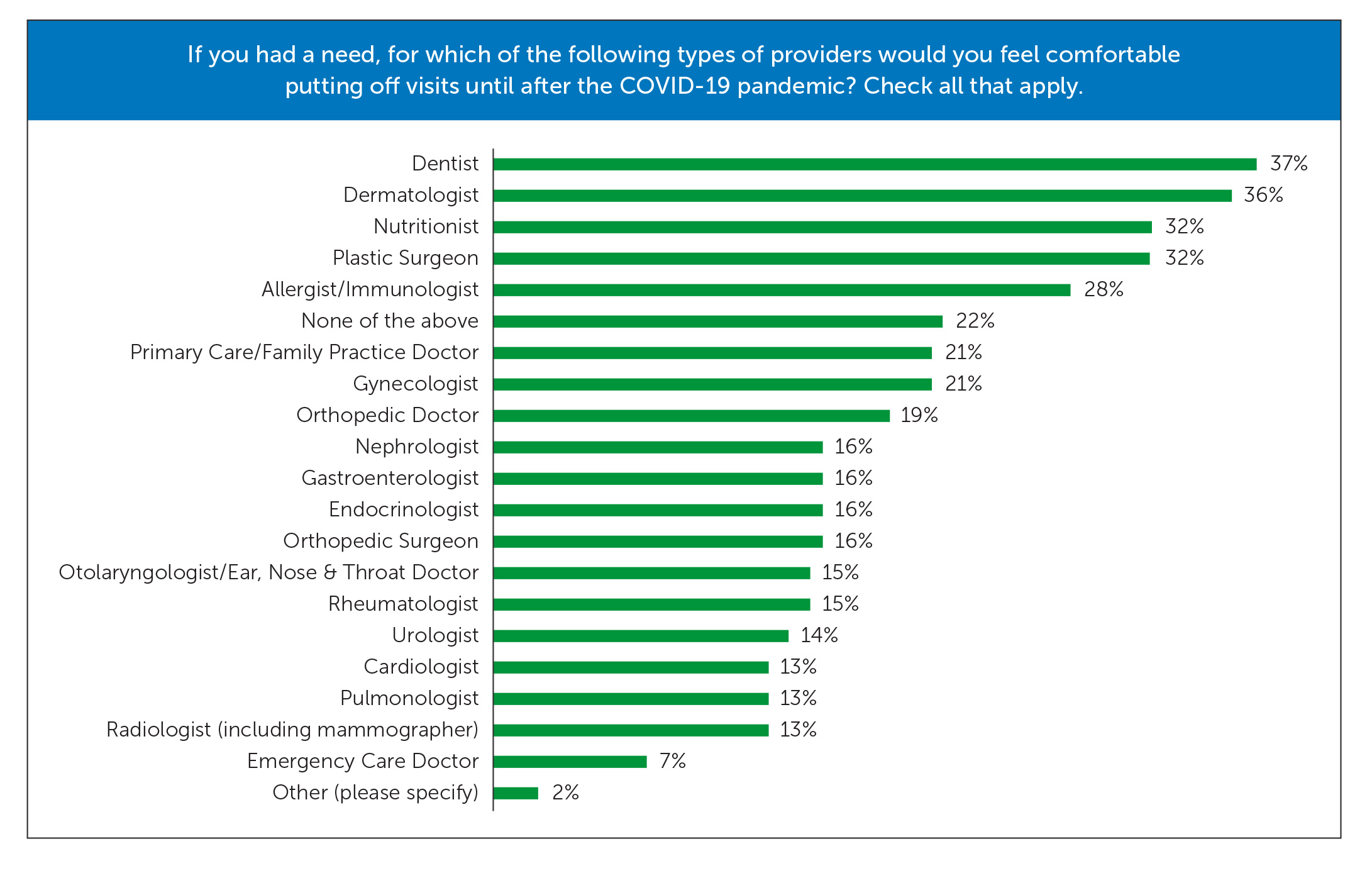
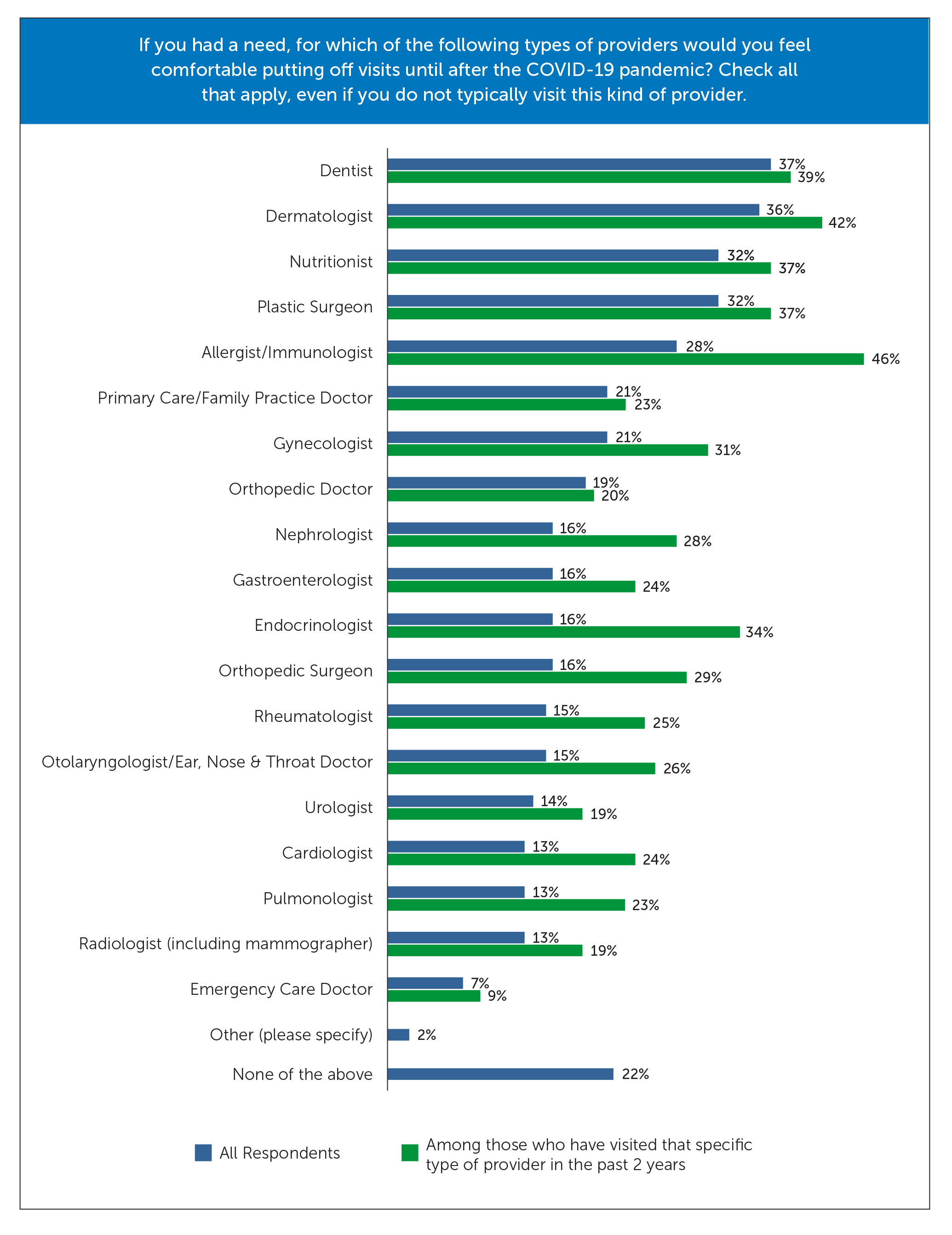
How has the comfort level changed from the peak of COVID-19 to now?
Comfort level at the peak of the pandemic:
In general, Americans are split on how comfortable they were visiting a doctor for preventive care at the peak of COVID-19 in their state. Forty-five percent say they were uncomfortable.

Men were more likely than women to say they were comfortable visiting a doctor for preventive care at the peak of COVID-19 in their state (59% vs 51%).
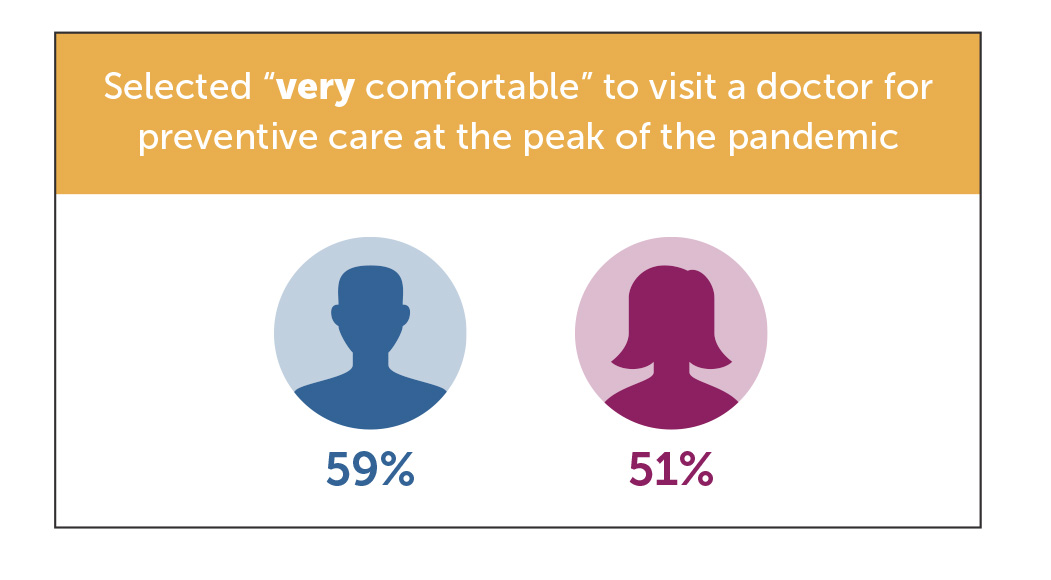
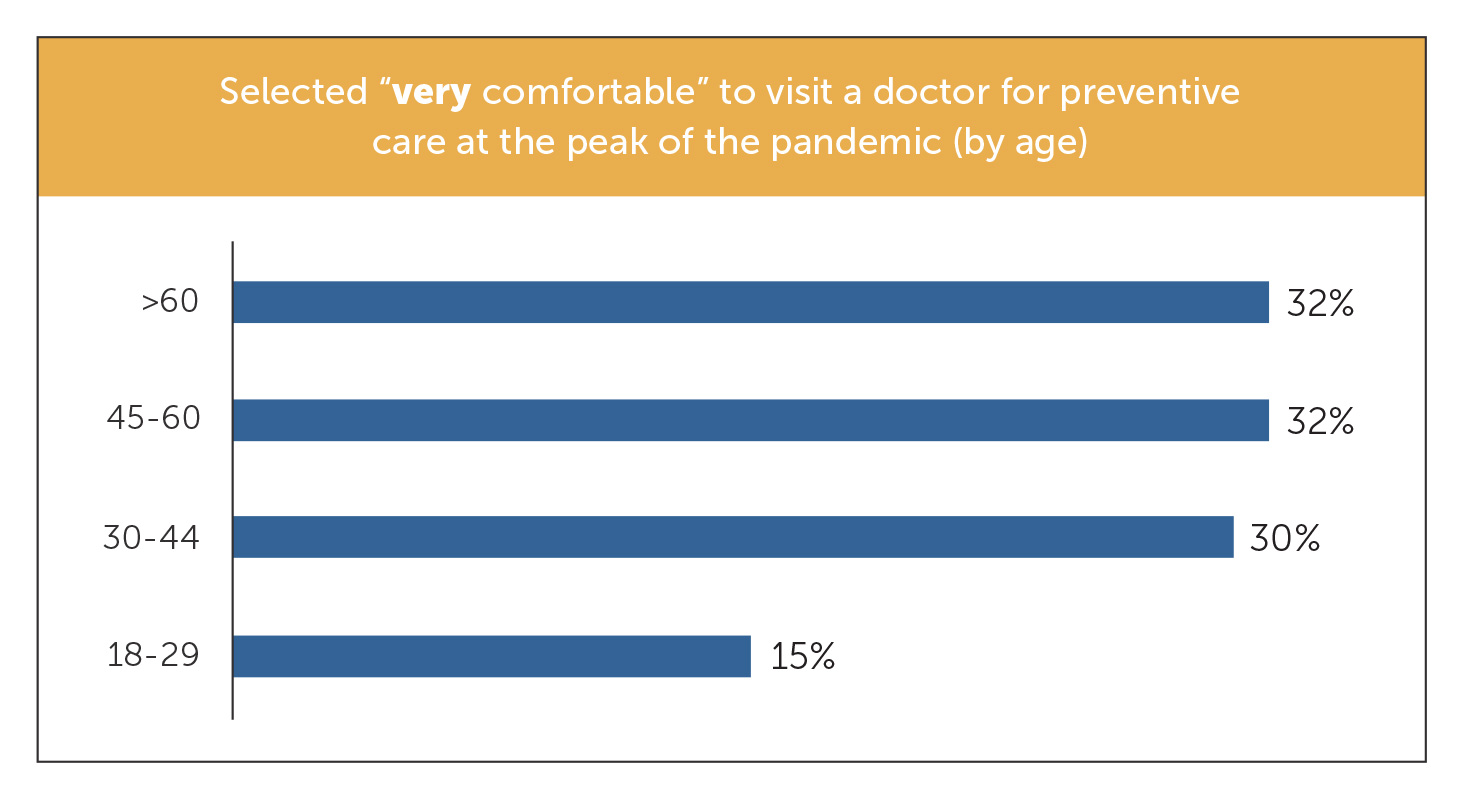
How has the comfort level changed from the peak of COVID-19 to now?
Comfort level now:
As mentioned previously in this report, at the time of the survey (September 2020), Americans reported feeling more comfortable visiting a healthcare provider. In general, Americans were split on how comfortable they were visiting a doctor for preventive care at the peak of COVID-19 in their state.
But now, 70% say they are comfortable visiting a doctor for preventive care compared to 55% at the peak of COVID-19 in their state.
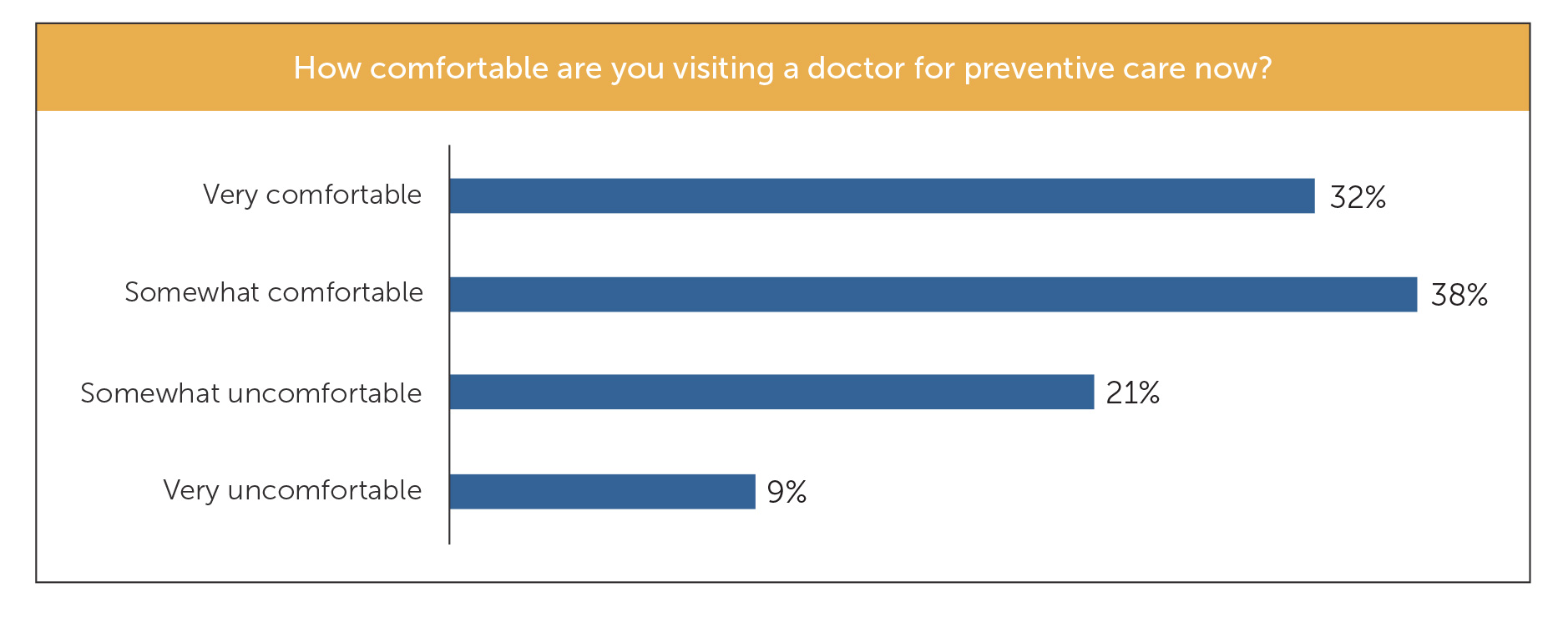
More likely to seek emergency services now:
During the peak of COVID-19 in their region, 67% of Americans said they would be likely to go to the emergency department if they had the need for urgent medical attention. If they had a need now, the number has increased, as 74% of Americans say it would be likely for them to go to the ED.
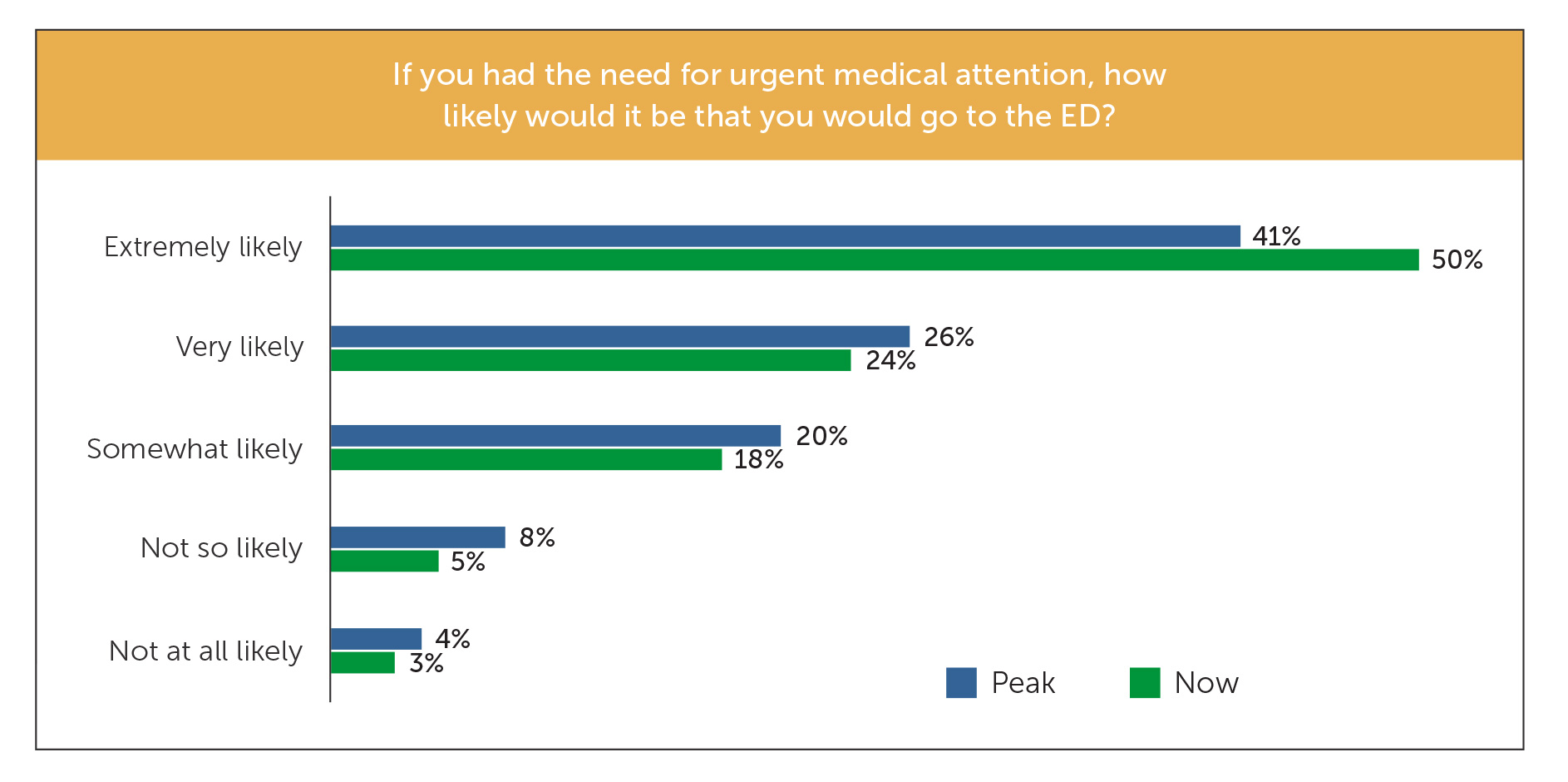
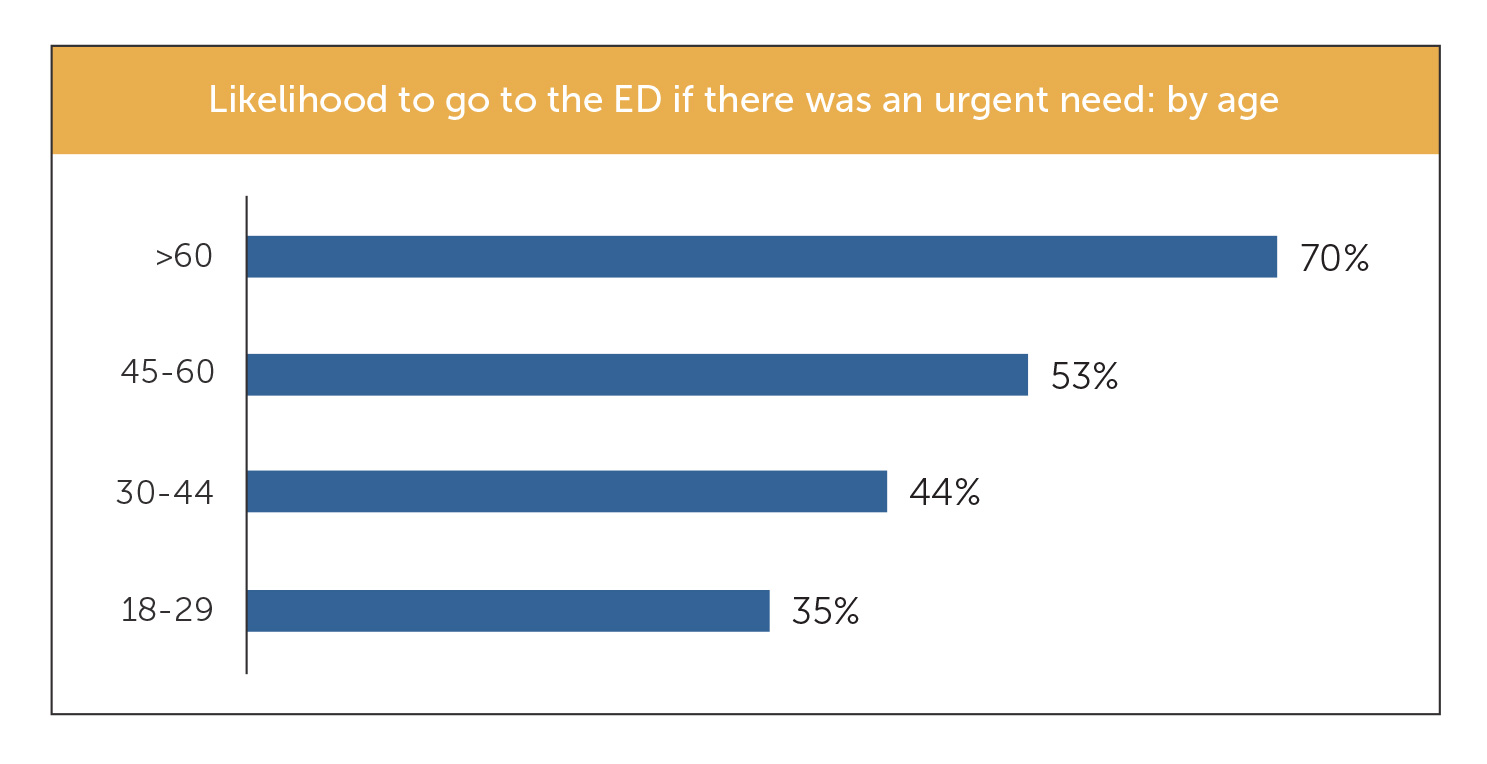
How has telehealth usage changed throughout 2020?
Prior to the COVID-19 pandemic, 34% of Americans say they used telehealth services, and two thirds (66%) of Americans say they never used telehealth services. Unsurprisingly, older Americans were the least likely to use telehealth services (83%). However, when asked about the use during the COVID-19 pandemic, the majority (53%) say they have used telehealth services with 22% saying they use it whenever possible.
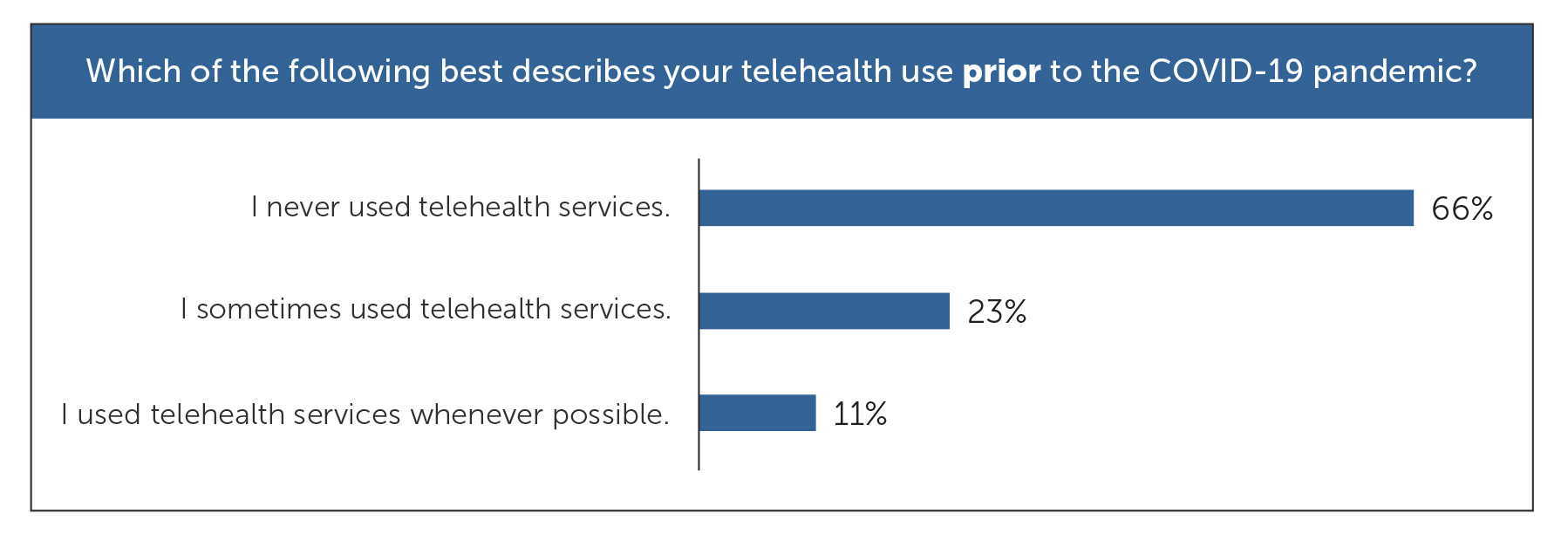
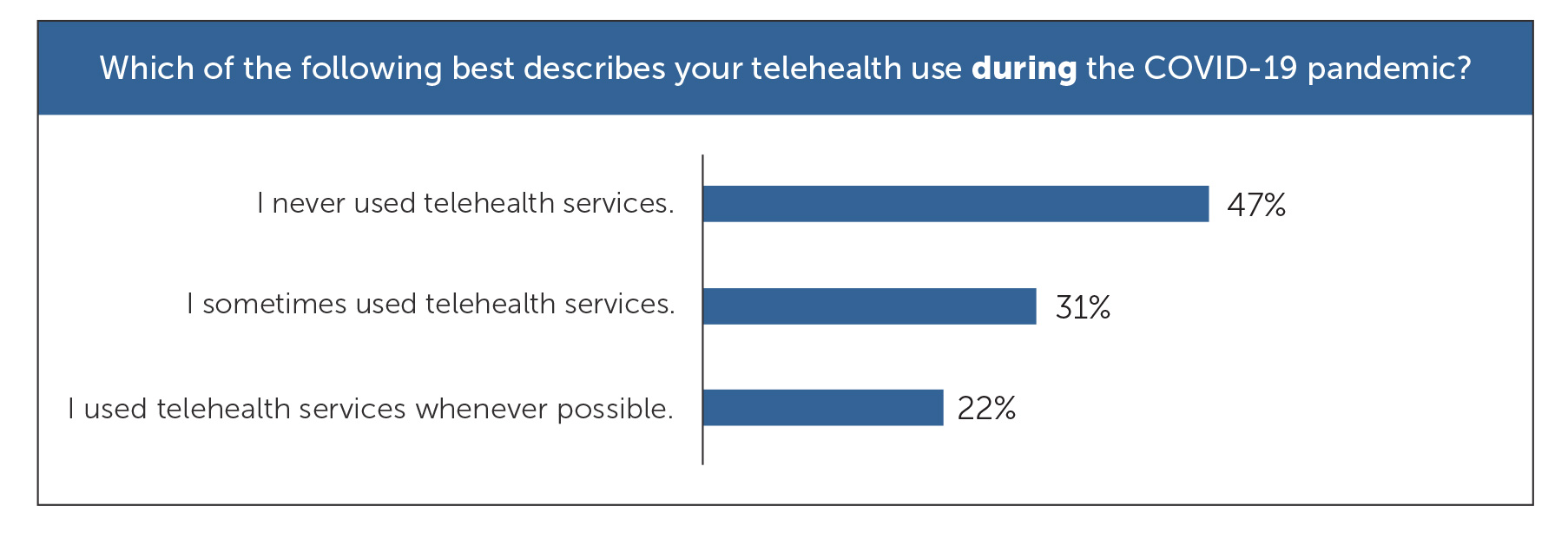
Is the loss of health insurance the next big crisis?
While many patients are beginning to return to their doctors, another healthcare crisis is brewing: 12% of Americans say they lost health insurance due to the pandemic. When the survey was fielded in early September, the national unemployment rate was 8.4%. Additional findings include that men are more likely than women to say they lost health insurance due to the pandemic (15% vs 9%) and that younger Americans are more likely than older Americans to say they lost health insurance due to the pandemic. As far as geographical regions, those from New England were far less likely than all other regions in the United States to say they lost health insurance during the pandemic (only 2%).
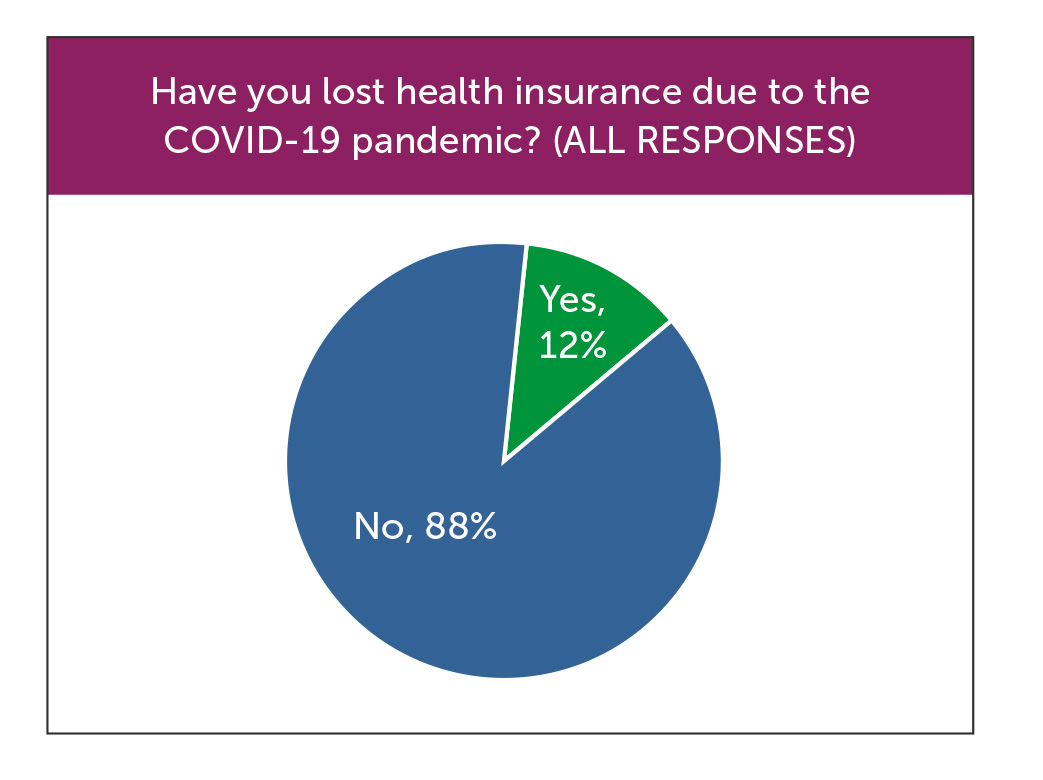
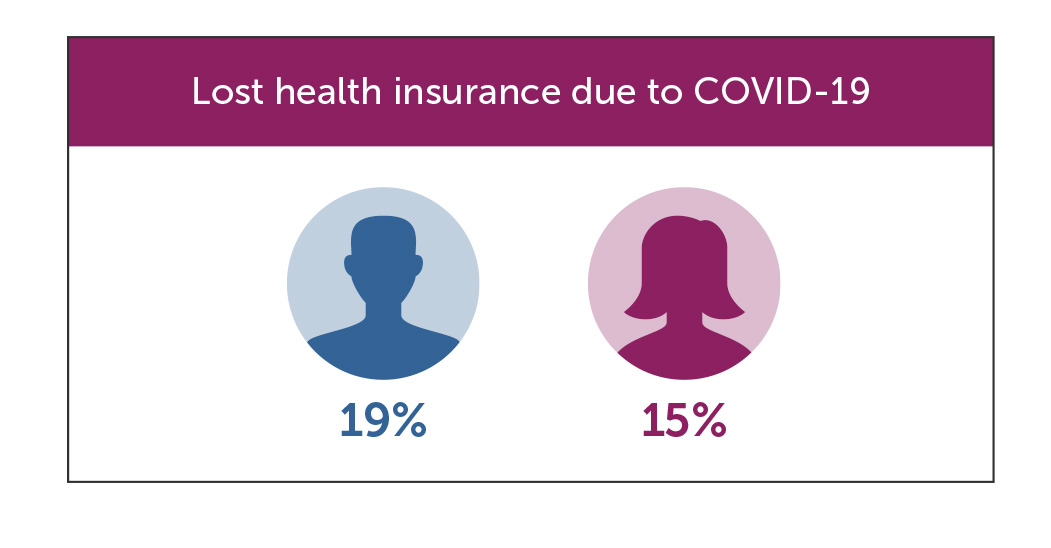

Almost a quarter of all Americans are more worried about losing access to healthcare than contracting COVID-19 or putting off preventive healthcare. Twenty-three percent say they are more worried about not having access to healthcare due to losing their health insurance than they are about putting off preventive healthcare or contracting the coronavirus.
A separate survey from LocumTenens.com of physicians and advanced practitioners found that 73% are concerned that the rise in newly uninsured patients will continue keeping people away from routine visits and elective procedures.
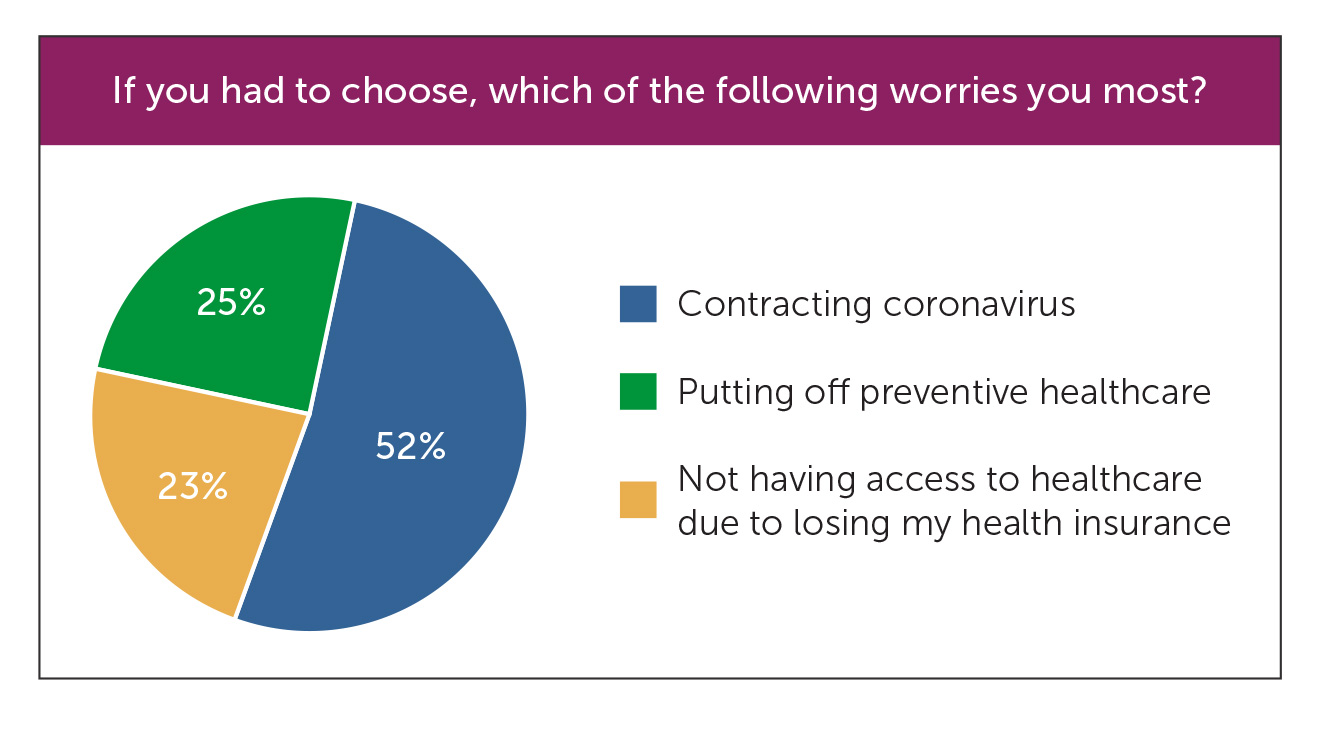
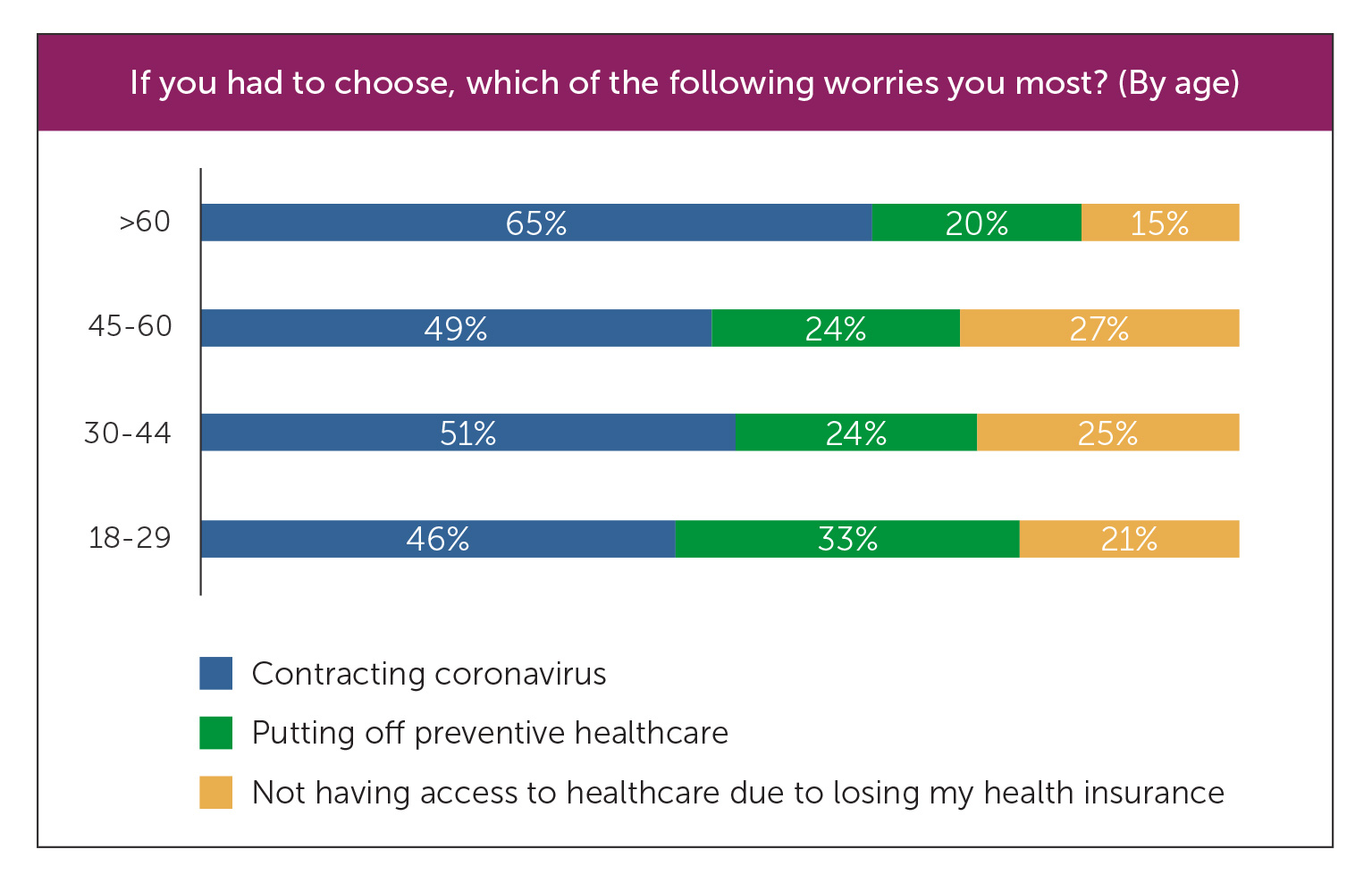
When asked why, those who are most worried about contracting coronavirus say they are in a high-risk group, worry about long-term effects and don’t want to spread it to family members. One survey respondent shares, “I have been sheltered in place for six months and have a pre-existing condition, so I am terrified to use buses or go to any medical facility for fear of catching the virus. Also, at my age, I am the perfect candidate to catch the virus.”
The reasons most cited by those who are more concerned with putting off preventive healthcare say health is important, they are already taking precautions for coronavirus and they have already put off enough. One respondent says, “I have some routine tests that I have been meaning to get done and I have not and it makes me feel stressed,” while another person states, “Doctors weren’t taking appointments and my yearly appointments are overdue. Prevention is the way many illnesses are discovered.”
Those who are most worried about losing their health insurance say it is because they worry about not being covered if a need arises, they have financial concerns and it is an everyday struggle aside from the pandemic. “I feel comfortable stretching the time between preventive care appointments, but if my family and I lost coverage and were in need of any medical care, it would be very difficult financially. We would run out of money quickly,” worries one survey respondent.
Methodology
LocumTenens.com fielded this survey on September 4, 2020, with a representative U.S. sample of 1,155 adults, ages 18+. The sample has been balanced for age and gender using the Census Bureau’s American Community Survey to reflect the demographic composition of the United States.